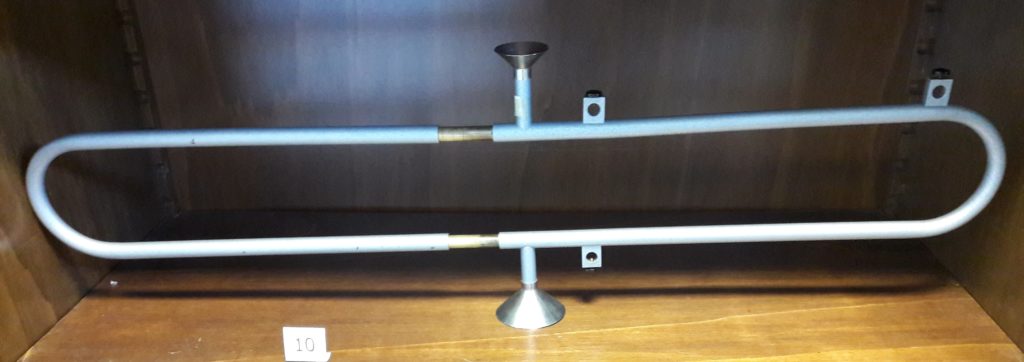
IT – Il Tubo di Quincke (ideato dal fisico tedesco George Hermann Quincke nella metà del 1800) permette di ricavare indirettamente la lunghezza d’onda e la velocità del suono in aria. Esso è formato da canne di ottone ad “U” scorrevoli, munite di raccordi di ingresso e di uscita, cui si può applicare da una parte un tubo flessibile per convogliare il suono e dall’altra un altro tubo per collegare un auricolare. Generando un suono per mezzo di un diapason in ingresso ed ascoltando per mezzo di un auricolare in uscita si udirà un suono rinforzato o smorzato a seconda della differenza dei cammini nei due tubi.
GB – Quincke tube – The Quincke tube (conceived by the German physicist George Hermann Quincke in the mid-1800s) allows one to indirectly derive the wavelength and speed of sound in the air. It is made up of sliding “U” brass rods, fitted with inlet and outlet connections, to which one can apply a flexible tube to convey the sound and on the other another tube to connect a headset. Generating a sound by means of a tuning fork at the entrance and listening through an output earphone you will hear a reinforced or damped sound depending on the difference of the paths in the two tubes.